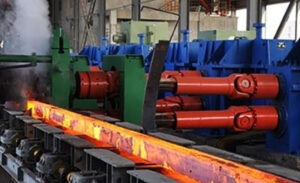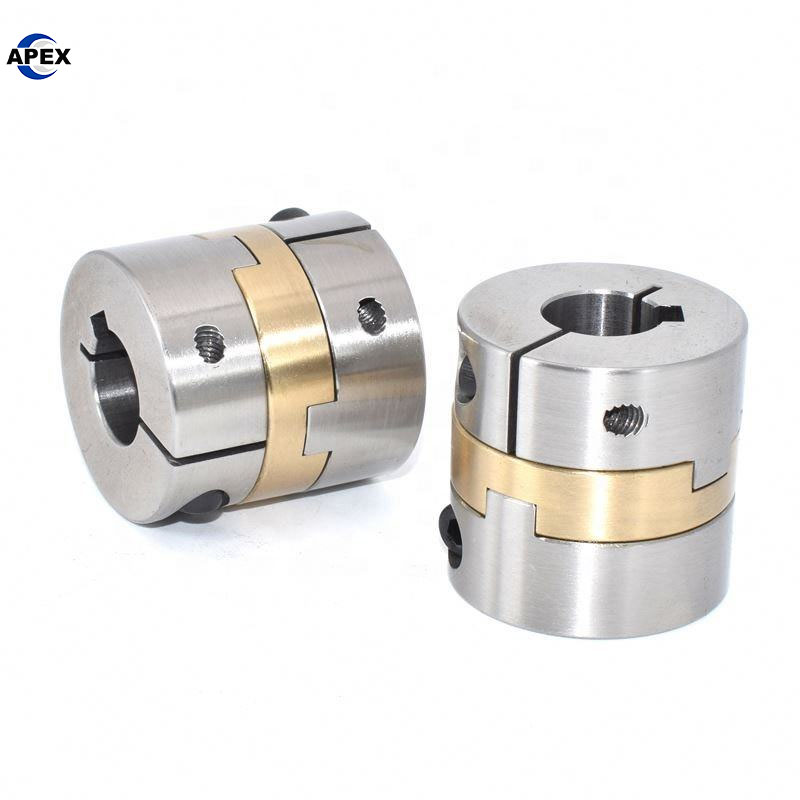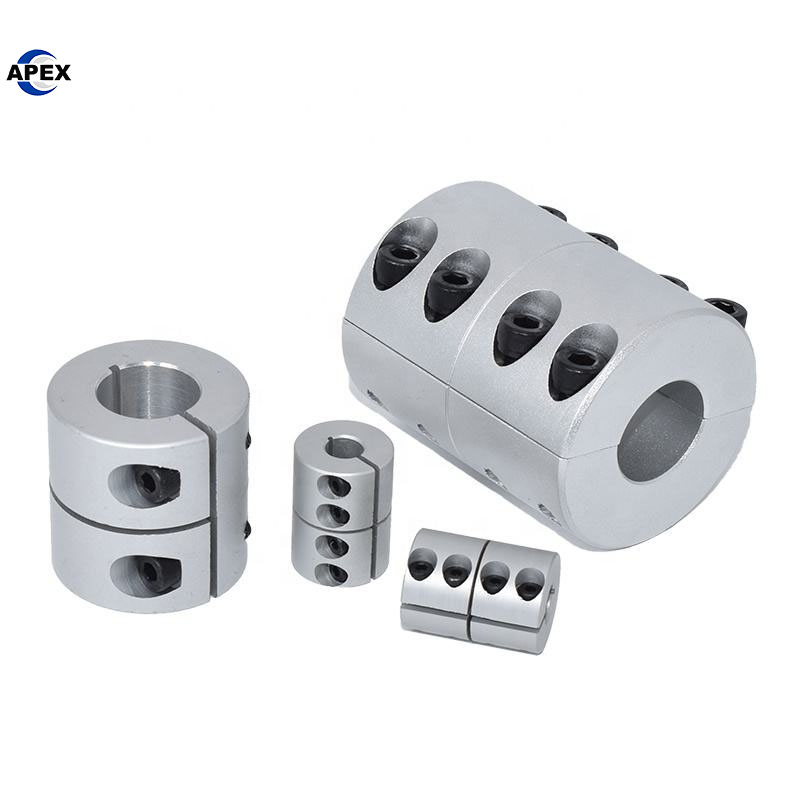OEM ODM motor coupling manufacturer.
Key Features:
✅ Premium Materials – SUS304 stainless steel body with imported aluminum bronze elastic element
✅ High Precision – CNC machined for exacting tolerances and reliable performance
✅ Zero Backlash – Oldham structure maintains precision in motion control systems
✅ Corrosion Resistant – Polished stainless steel construction for long service life
✅ Easy Installation – Clamping design allows quick and secure mounting
✅ Wide Size Range – Outer diameter 14.5-70mm, length 18.7-77mm
Apex Coupling: Your OEM/ODM Partner for High-Performance Flexible Shaft Couplings. We provide custom-designed, durable couplings for various industries, ensuring perfect fit and reliable power transmission. Get your solution now!
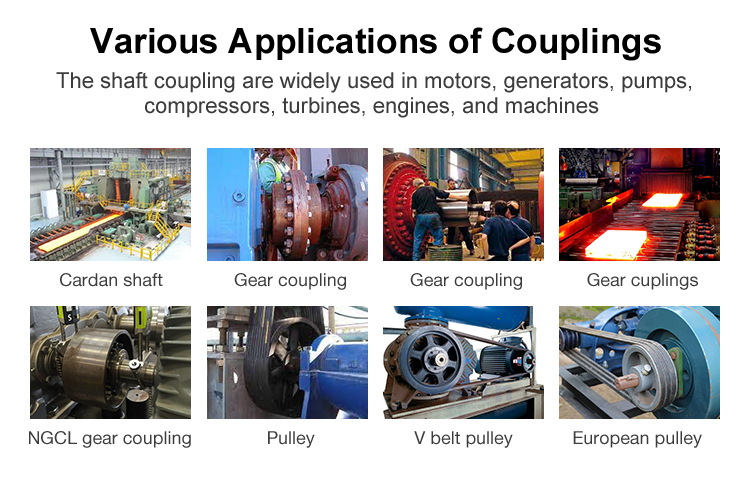
How to choose motor coupling?
A 5-Step Guide
Step 1: Identify the Driven Equipment & Service Factor
The machine connected to the motor defines the operating conditions.
What is it? Is it a pump, fan, conveyor, compressor, or a high-cyclic machine like a press?
Determine Service Factor: The driven equipment’s operational characteristics (shock loads, uniformity of load) determine the service factor. Multiply your motor’s rated torque by this factor to get the Design Torque.
| Driven Equipment | Typical Service Factor | Reason |
|---|---|---|
| Centrifugal Pumps, Fans | 1.2 – 1.5 | Relatively smooth operation, moderate start-up torque. |
| Conveyors (Uniform Load) | 1.4 – 1.7 | Steady running, but potential for jam-ups and high start-up torque. |
| Compressors, Mixers | 1.5 – 2.0 | Pulsating or moderate shock loads. |
| Crushers, Hammer Mills | 2.0 – 3.0+ | Severe shock loads and high vibration. |
Step 2: Determine Key Technical Parameters
Gather these essential specifications from your motor and driven equipment.
| Parameter | How to Find It & Why It’s Important |
|---|---|
| Motor Power (HP/kW) & Speed (RPM) | Found on the motor nameplate. Used to calculate torque: Torque (N-m) = (kW × 9550) / RPM. |
| Shaft Sizes & Keyways | Measure the diameter of both the motor shaft and the driven equipment shaft. Note the keyway dimensions. |
| Expected Misalignment | Estimate the angular and parallel misalignment between the two shafts. Perfect, permanent alignment is impossible. |
Step 3: Select the Coupling Type Based on Application Needs
Match the coupling’s strengths to your primary need from Step 1.
| If Your Primary Need Is… | Choose This Coupling Type | Why? |
|---|---|---|
| General Purpose, Vibration Damping | Jaw Coupling (Elastomeric) | Excellent for absorbing vibration and minor shocks. Maintenance-free, cost-effective. The go-to choice for most pumps, fans, and conveyors. |
| Precision Positioning, Zero Backlash | Bellows or Disc Coupling | Provides high torsional stiffness and zero backlash for servo motors and precise motion control. |
| High Torque & Misalignment | Gear Coupling | Handles very high torque and moderate misalignment. Requires lubrication. Ideal for heavy industry (steel, mining). |
| High Shock Loads | Grid Coupling | The grid element is superb at absorbing severe shock loads. Robust and durable. |
| Very Large Misalignment | Universal Joint (U-Joint) | For applications where shafts are at a significant angle. Requires careful selection for constant velocity. |
Step 4: Check Performance Limits & Environment
Torque & Speed: Ensure the coupling’s rated torque is greater than your Design Torque (from Step 1) and that your operating speed is below the coupling’s maximum RPM.
Environment:
Temperature: Will ambient or process heat affect the coupling? Standard elastomers work up to ~80-100°C.
Chemicals/Oils: Is the coupling exposed to solvents, oils, or ozone? This dictates the material of the flexible element (e.g., NBR, Polyurethane).
Space Constraints: Is there a limited space between the shafts? Choose a compact coupling like a diaphragm or jaw type.
Step 5: Finalize with a Trusted Supplier
A good supplier will:
Provide clear technical data and sizing guides.
Offer customization (OEM/ODM) for special bore sizes or materials.
Have engineering support to verify your selection for critical applications.
Summary: The Motor Coupling Selection Checklist
Driven Equipment: What is it? (Defines Service Factor)
Torque & Speed: Power, RPM, Shaft Sizes.
Primary Need: Damping, Precision, Torque, or Misalignment? (Defines Type)
Environment: Temperature, Chemicals, Space. (Defines Material & Size)
Final Recommendation: For the vast majority of standard industrial applications (pumps, fans, conveyors), a Jaw Coupling is the default, excellent choice due to its balance of performance, cost, and maintenance-free operation. Always refer to the coupling manufacturer’s catalog to match your calculated torque and speed to their specific product ratings.
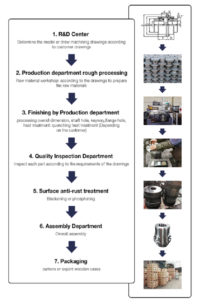
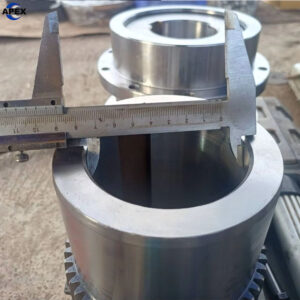
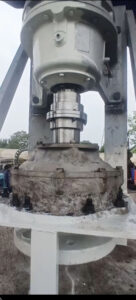
Customization options, customized on demand, sample processing, graphic processing.
Product Support traceability of raw materials
Quality control conducted on all production lines.
R&D engineer education levels3 graduate
Choose Confidence. Choose Safety.
Contact us today to discuss how our certified quality and safety standards can protect your operations. Request a quote and receive full technical data sheets for your evaluation.
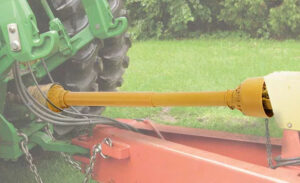
Our Commitment to You:
We guarantee that every coupling leaving our facility is built to perform safely and reliably. Our quality is not just a promise—it’s a result of a systematic, verifiable process built into everything we do.
